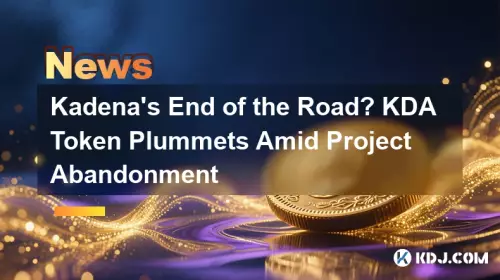 |
|
 |
|
 |
|
 |
|
 |
|
 |
|
 |
|
 |
|
 |
|
 |
|
 |
|
 |
|
 |
|
 |
|
 |
|

What Exactly Is a Bitcoin Node?
比特幣節點到底是什麼?
Blockchain networks are made up of nodes, which are computers running software and storing crucial data for managing and running the network. Each node's computational capacity is tailored to its purpose, with Bitcoin nodes playing specialized roles essential to the cryptocurrency's success.
區塊鏈網路由節點組成,節點是運行軟體並儲存用於管理和運行網路的關鍵資料的電腦。每個節點的運算能力都是根據其目的量身定制的,比特幣節點扮演著對加密貨幣的成功至關重要的特殊角色。
Full nodes, the backbone of Bitcoin's blockchain, maintain a comprehensive, up-to-date copy of the blockchain. They verify transactions and blocks, ensuring the blockchain's integrity and continuity. Full nodes serve as gatekeepers, validating transactions against network rules and history, and storing them in a pool of unconfirmed transactions, the "mempool," until miners add them to blocks.
全節點是比特幣區塊鏈的支柱,維護區塊鏈的全面、最新的副本。他們驗證交易和區塊,確保區塊鏈的完整性和連續性。完整節點充當看門人,根據網路規則和歷史驗證交易,並將它們儲存在未確認交易池(「記憶體池」)中,直到礦工將它們添加到區塊中。
Validating Bitcoin transactions involves:
驗證比特幣交易涉及:
- Verifying digital signatures for authenticity
- Determining transaction accuracy
- Checking available balances and transaction fees
- Preventing double-spending
Authenticated transactions are disseminated throughout the network by full nodes, where miners collect and group them into blocks.
驗證數位簽章的真實性確定交易準確性檢查可用餘額和交易費用防止雙重支出經過身份驗證的交易由全節點在整個網路中傳播,礦工在其中收集並將它們分組為區塊。
Full nodes also scrutinize miners' work, ensuring compliance with consensus mechanisms. They check block formats, adhere to proof-of-work requirements, and prevent blocks from exceeding size limits.
全節點也審查礦工的工作,確保遵守共識機制。他們檢查區塊格式,遵守工作量證明要求,並防止區塊超出大小限制。
Crucially, full nodes prevent miners from wielding excessive power and mitigate the risk of 51% attacks by rejecting inauthentic blocks. However, the decentralized and competitive nature of mining itself serves as the primary defense against such attacks.
至關重要的是,全節點可以防止礦工濫用權力,並透過拒絕不真實的區塊來降低 51% 攻擊的風險。然而,挖礦本身的去中心化和競爭性是抵禦此類攻擊的主要防禦手段。
Despite their critical role, nodes do not receive block rewards like miners. Node operators typically run nodes to support network security and health, protect privacy, or benefit commercially, such as exchanges or wallet services requiring real-time blockchain data.
儘管發揮著至關重要的作用,節點並不像礦工那樣獲得區塊獎勵。節點運營商通常運行節點來支援網路安全和健康、保護隱私或商業利益,例如需要即時區塊鏈資料的交易所或錢包服務。
Bitcoin Mining Nodes: Unveiling the Block Creation Process
比特幣挖礦節點:揭示區塊創建過程
A Bitcoin mining node, also known as a Bitcoin miner, is a particular type of full node. While all mining nodes perform full node functions, not all full nodes participate in mining.
比特幣挖礦節點,也稱為比特幣礦工,是一種特殊類型的全節點。雖然所有挖礦節點都執行全節點功能,但並非所有全節點都參與挖礦。
Mining nodes participate in the proof-of-work (PoW) process, which involves solving complex mathematical problems to verify blocks of transactions and broadcast new blocks to the network. The successful miner receives newly minted Bitcoin as a reward.
挖礦節點參與工作量證明(PoW)過程,該過程涉及解決複雜的數學問題以驗證交易區塊並向網路廣播新區塊。成功的礦工會收到新鑄造的比特幣作為獎勵。
Mining nodes engage in intense competition, using substantial computing power and energy to solve these problems. They employ Bitcoin mining software that defines the rules for creating and proposing blocks to the network.
挖礦節點進行激烈的競爭,需要消耗大量的算力和能量來解決這些問題。他們使用比特幣挖掘軟體來定義創建和向網路提議區塊的規則。
Before verifying and proposing a new block, mining nodes validate transactions. The new block is then broadcast back to full nodes, which assess its adherence to network rules, including Bitcoin creation regulations.
在驗證和提出新區塊之前,挖掘節點會驗證交易。然後,新區塊被廣播回全節點,全節點評估其對網路規則的遵守情況,包括比特幣創建法規。
Additional Bitcoin Node Types: Unveiling the Blockchain Ecosystem
其他比特幣節點類型:揭開區塊鏈生態系統的面紗
Apart from full nodes and mining nodes, other types of Bitcoin nodes contribute to the network:
除了全節點和挖礦節點之外,其他類型的比特幣節點也為網路做出了貢獻:
- Light Nodes (SPV): These nodes store a "lightweight" blockchain version, retrieving data from full nodes when needed. They are suitable for devices with limited storage or processing power.
- Lightning Nodes: These nodes facilitate faster and cheaper Bitcoin transactions on the Lightning Network, a layer-two solution built on the Bitcoin network.
- Archive Nodes: These nodes maintain complete blockchain copies, including historical data, providing valuable information for data validation and synchronization.
- Pruned Nodes: These nodes store blockchain history within defined limits, removing older data to maintain a manageable size.
- Mining Pool Nodes: These nodes coordinate resources from mining groups, distributing rewards fairly among participants after a successful block verification.
Comparative Analysis: Bitcoin Miners vs. Bitcoin Nodes
輕節點(SPV):這些節點儲存「輕量級」區塊鏈版本,在需要時從全節點檢索資料。它們適用於儲存或處理能力有限的設備。閃電節點:這些節點促進閃電網路上更快、更便宜的比特幣交易,閃電網路是建立在比特幣網路上的第二層解決方案。存檔節點:這些節點維護完整的區塊鏈副本,包括歷史數據,為數據驗證和同步提供有價值的資訊。修剪節點:這些節點在定義的範圍內儲存區塊鏈歷史記錄,刪除舊數據以保持可管理的大小。礦池節點:這些節點協調來自採礦組的資源,在參與者之間公平分配獎勵成功驗證區塊後。比較分析:比特幣礦工與比特幣節點
The following table highlights the functional distinctions between Bitcoin nodes and miners:
下表重點介紹了比特幣節點和礦工之間的功能差異:
| Feature | Miner | Node |
|---|---|---|
| Function | Verifies blocks, adds new blocks to the blockchain, and receives rewards | Validates transactions, broadcasts transactions and blocks |
| Role in Transaction Process | Selects and groups transactions, verifies blocks, and adds new blocks | Validates and broadcasts transactions, checks miner's work |
| Compensation | Receives block rewards (BTC and transaction fees) | Typically does not receive rewards |
| Primary Responsibility | Securing the network, creating new blocks | Ensuring transaction validity and network integrity |
| Network Contribution | Participates in proof-of-work consensus, adds new blocks to the blockchain | Verifies transactions, broadcasts blocks, and helps maintain network security |
Collaboration Between Bitcoin Miners and Nodes: A Symbiotic Relationship
FeatureMinerNodeFunction驗證區塊,為區塊鏈添加新區塊,並接收獎勵驗證交易,廣播交易和區塊交易過程中的角色選擇和分組交易,驗證區塊,並添加新區塊驗證和廣播交易,檢查礦工的工作補償接收區塊獎勵(BTC和交易費用)通常做不獲得獎勵主要職責保護網絡,創建新區塊確保交易有效性和網絡完整性網絡貢獻參與工作量證明共識,向區塊鏈添加新區塊驗證交易,廣播區塊並幫助維護網路安全比特幣礦工和節點之間的協作:共生關係
Bitcoin miners and nodes maintain an interdependent relationship, relying on each other for the following critical processes:
比特幣礦工和節點保持著相互依賴的關係,在以下關鍵過程中相互依賴:
- Transaction Validation and Broadcasting: Nodes verify and broadcast transactions, ensuring protocol compliance and preventing double-spending.
- Mempool: Nodes maintain their own version of a pool of unconfirmed transactions, the "mempool," from which miners select transactions for inclusion in blocks.
- Transaction Selection by Miners: Miners select and validate transactions, creating unique blocks with a Merkle tree summarizing all transactions.
- Mining Process: Proof-of-Work, Block Addition, and Rewards: Miners compete to solve complex hashing problems, adding new blocks to the blockchain and receiving rewards.
- Consensus and Block Addition: Nodes verify new blocks, achieving consensus on the blockchain's state and preventing double-spending.
- Broadcast of New Blocks: Instead of broadcasting the entire updated blockchain, only the new block is disseminated, allowing other nodes to independently validate and add the block to their copies.
The Paramount Importance of Bitcoin Nodes
交易驗證和廣播:節點驗證和廣播交易,確保協議合規性並防止雙重支出。記憶體池:節點維護自己的未確認交易池版本,即“記憶池”,礦工從中選擇交易以包含在區塊中。交易礦工選擇:礦工選擇並驗證交易,使用總結所有交易的Merkle 樹創建獨特的區塊。挖礦過程:工作量證明、區塊添加和獎勵:礦工競爭解決複雜的哈希問題,向區塊鏈新增區塊共識和區塊添加:節點驗證新區塊,對區塊鏈狀態達成共識並防止雙花。新區塊廣播:不是廣播整個更新的區塊鏈,而是只傳播新區塊,允許其他節點獨立驗證區塊並將其添加到其副本中。比特幣節點的重要性
The significance of Bitcoin nodes and their impact on the Bitcoin network cannot be overstated. These core elements not only validate and broadcast transactions but also achieve consensus via the Bitcoin consensus mechanism, ensuring the secure addition of new, immutable blocks to the blockchain.
比特幣節點的重要性及其對比特幣網路的影響怎麼強調都不為過。這些核心元素不僅驗證和廣播交易,還透過比特幣共識機制達成共識,確保新的、不可變的區塊安全添加到區塊鏈中。
Nodes serve as communication hubs and intermediaries, ensuring that transactions and blocks are transmitted across the network, effectively routing data. They play a pivotal role in maintaining the decentralized nature of Bitcoin, preventing reliance on a single software entity, and reducing vulnerabilities and attack risks.
節點充當通訊樞紐和中介,確保交易和區塊透過網路傳輸,有效路由資料。它們在維護比特幣的去中心化性質、防止對單一軟體實體的依賴以及減少漏洞和攻擊風險方面發揮關鍵作用。
In conclusion, Bitcoin nodes and miners are indispensable components of the Bitcoin blockchain, working together to ensure its integrity, security, and smooth functioning.
總之,比特幣節點和礦工是比特幣區塊鏈不可或缺的組成部分,共同確保其完整性、安全性和平穩運作。
免責聲明:info@kdj.com
所提供的資訊並非交易建議。 kDJ.com對任何基於本文提供的資訊進行的投資不承擔任何責任。加密貨幣波動性較大,建議您充分研究後謹慎投資!
如果您認為本網站使用的內容侵犯了您的版權,請立即聯絡我們(info@kdj.com),我們將及時刪除。
-

-

-

- 查理王 5 便士硬幣:您口袋裡的同花大順?
- 2025-10-23 08:07:25
- 2320 萬枚查爾斯國王 5 便士硬幣正在流通,標誌著一個歷史性時刻。收藏家們,準備好尋找一段歷史吧!
-

-

-

- 嘉手納的路的盡頭? KDA 代幣因項目放棄而暴跌
- 2025-10-23 07:59:26
- Kadena 關閉運營,導致 KDA 代幣螺旋式上升。這是結束了,還是社區可以讓這條鏈繼續存在?
-

- 查爾斯國王 5 便士硬幣開始流通:硬幣收藏家的同花大順!
- 2025-10-23 07:07:25
- 查爾斯國王 5 便士硬幣現已在英國流通!了解熱門話題、橡樹葉設計,以及為什麼收藏家對這款皇家發佈如此興奮。
-

- 查爾斯國王 5 便士硬幣進入流通:收藏家指南
- 2025-10-23 07:07:25
- 查理三世國王的 5 便士硬幣現已流通!了解新設計、其意義以及收藏家為何如此興奮。準備好尋找這些歷史硬幣!
-






























































